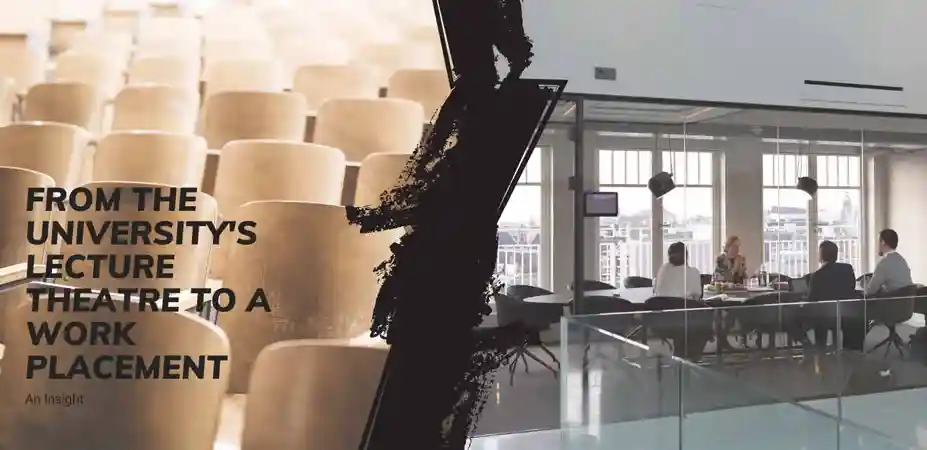
Local authorities are too focused on housing and failing to understand the need for industrial development –a sector far more sophisticated than many of them think.
Those sentiments were a recurring theme during a round table debate among experts in the industrial sector organised by Thames Valley Property and held at the Slough headquarters of Segro on Tuesday, July 4.
On the panel were (clockwise from left in main image):
Karen Thomas, partner, national logistics and industrial, Cushman & Wakefield
Paul Lewis, regional director Thames Valley & data centres, Segro
Mike Righton, Thames Valley managing partner Rider Levett Bucknall
Hugh Blaza, managing partner, BrookStreet des Roches
Annette Smith, sector director of transport planning, Systra
Tim Burden, director, Turley
Matthew Battle, managing director, UK Property Forums (chair)
Andy Jansons, managing director, Jansons Property
Richard Dawtrey, partner, commercial property investment, Vail Williams
Many of the panel agreed the current market cycle is like no previous one.
Mr Jansons, 35 years in the industry, had seen similar but not with the rental growth that’s occurring this time. He reported a more drastic lack of supply.
Beaconsfield-based Mr Jansons referred to a previous call by him for Green Belt releases for industrial land. He added: “You need to plan to bring land forward. Local authorities, certainly in our area, aren’t.
“If you go wider afield, up the M40, further up the M1 and particularly east of London there are more opportunities. In our concise patch I don’t think anything has been done about it.”
Mr Dawtrey said his clients found upgrading industrial buildings required far less capital expenditure than offices.
He said: “The problem we are finding at the moment is that they are becoming so expensive due to rental growth and yield compression that it’s quite hard to get them particularly with so many people competing against them.”

He backed Mr Jansons’ complaint of a shortage of land.
“It’s becoming more and more expensive to buy industrial land and in some cases some of my clients are paying more than residential values on the back of rental growth,” he said.
Mrs Thomas was the first to raise the point that more sophisticated occupiers were now evident.
She said: “We tend to lump everyone in the industrial bracket and I think maybe a lot gets lost in the noise that surrounds the word ‘industrial’.
“It covers such a wide range of uses and users that we probably need to start distilling what that actually means to enable us to prevent release of industrial land to higher value users and maybe encourage more mixed use schemes that I know Segro are at the forefront of.”
Mr Lewis lamented the lack of land and saw no immediate prospect of more. The property industry, he said, had to do better to get its message out about the sector’s varied users.
But industrial was keeping RLB busy. Mr Righton reported the firm was carrying out 15 – 20 sq m of design and construction work in the sector including work for Amazon, Segro and on rail freight facilities in Doncaster.
He reported an increased focus by developers on aesthetics as well as more automation both for ‘e-tailers’ and retailers.
He said: “That’s more apparent at the moment and it’s how to integrate that technology with the more historical base build industrial product, that is becoming more of an issue for us – early integration into the end user product particularly for users like Amazon.
“In some instances they (Amazon) are picking up existing space but more often than not they are picking up new build products so they can get away from that need to integrate from the base build.”
But a very different market was evident in Oxfordshire where Mr Blaza said research and development (R&D) dominated while Oxford itself had few areas for industrial buildings.
He said: “The university and the Oxford colleges are going great guns at the moment. They are doing a lot of work in Oxford itself but I think there’s a recognition that Oxford cannot be developed for industrial uses. It’s too small and it’s too tight.

“There are areas of land that the university colleges are acquiring to develop their own activities in the centre and immediate areas adjacent to the centre.”
Of the business parks further afield Mr Blaza pointed to the possible ‘jewel in the crown‘ that is Oxford North, where the new Oxford Parkway station will connect with London Marylebone.
He said: “In that immediate vicinity there is a proposal to create an enormous mixed use development of housing, shops and offices. I don’t think there is any industrial per se but it would be quite surprising if there wasn’t some kind of industrial warehousing activity there as well.”
Mrs Smith said Systra, much involved in travel plans, was seeing more focus on employee wellbeing and health and the subsequent approach to technology and travelling to work.
But she warned of a possible lack of Government support for this region.
She said: “We looked at the industrial strategy when it was out for consultation and I saw some alerts in terms of transport for the Thames Valley, in that there’s a lot of information, on transport for the north and Midland Connect but not much mention of the Thames Valley apart from Heathrow.
“But I think if you had a sub regional transport body you’re going to get a lot more emphasis. There is a risk around the industrial strategy that we need to be aware of – we need to be lobbyist and influential in that area.”
She warned that while the Thames Valley may be an innovator and could lead the way in technology, its industrial growth could be being taken for granted.
Mr Burden said Turley had completed a report for Segro called Keeping London Working, which highlighted the loss of stock to housing, and Mr Battle reported how that was evident in Local Plans. Mr Jansons was unimpressed by those he had seen.
He said: “I’ve looked at a lot of Local Plans and there was a lot of talk but not a lot of action in terms of allocation.”
But Mr Burden said the effects of Heathrow’s third runway, potentially doubling its throughput of cargo, was significant and a report being prepared by planning consultants Quod on such large scale issues must be engaged with by the Thames Valley.
Other pressures on industrial space, he said came from London’s expansion at a time when there was growth in industrial from logistics and e-commerce operators.
He added: “I don’t think planning is alive to those changes and that final mile issue.”
All Berks and Bucks authorities, he said, had been moving forward with their new Local Plans while Oxfordshire authorities were progressing with theirs. Now all those in Bucks have stalled.
Green Belt releases he said helped housing needs but he added: “What they haven’t done is properly deal with employment matters in my opinion.”
The Royal Borough of Windsor & Maidenhead, said Mr Burden, planned barely half the B class (industrial/distribution/warehouse) it needed.

“They are planning for no new employment sites, they are planning on redeveloping what they’ve already got and they’ve basically dismissed the evidence base. It puts quite a high need requirement on B1c,B2, B8 uses.”
He went on: “What the council – strangely – have done is say we need more B1 office space. We don’t need B2, B8. So they’re only planning for 25,000 sq m of B8 when what the evidence says is nearer 170,000 sq m.”
Mr Jansons said facts and figures were needed to prove the point to councils.
But Mr Burden said: “Windsor & Maidenhead are saying ‘we are looking at past trends in terms of current employment make up’. A cynical person like myself would say they want offices because they own lot of land in Maidenhead town centre which has got allocations for offices. It’s not necessarily dealing with what the market is indicating.”
The lack of planning for new sites was, he said, a major concern.
And the Royal Borough wasn’t the only authority, delegates felt, was getting it wrong. Mr Jansons said: “The same thing is happening in Wycombe. They did a study and they’ve actually proposed zero employment space. They had four five options to consider and they chose none.”
Office space, the meeting heard, was now being used more efficiently and firms were consolidating their space while industrial needed to expand. Last mile delivery, said Mr Lewis, illustrated the point – low density use which needed to be close to homes.
He said: “The hint is in the title – last mile delivery. You can’t displace it somewhere much further away just because it’s convenient for land allocation, it needs to be close to where the centres of population are.”
He argued that SMEs also want to be near where staff live and displacing industrial often didn’t work. In Slough, Segro had considered converting industrial to offices but saw more demand from industrial.
Segro is also considering building mult-storey industrial units but Mr Lewis said ‘real pressure’ would be needed to make that work, due to cost and design constraints, although it has worked in Asia.
Getting multi-storey to work in London could see it ripple out, said Mrs Thomas.
The image of industrial presented another obstacle. Mrs Smith raised the possibility that London could view the massive Old Oak Common redevelopment as a site for some industrial as it’s far enough out of London.
But she said: “My question is, what’s the desirability for local authorities and planners to have industrial? When I work industrial locations, the public realm is quite poor, management is difficult. There’s a lack of cohesion. Is the demand for industrial what the Thames Valley wants?”
Mr Burden picked up on the unglamorous image of the sector which was not engaging councils. He added: “It’s all about housing. There’s lots of discussion about housing pressures. The whole discussion in Windsor & Maidenhead for example has been housing, housing, housing and that isn’t how we should be doing planning in this area.
“The housing numbers are driven by the employment opportunities and the population changes etc. As time moves on I think some councils will realise they are going to benefit from business rates and things like that (from industrial).”
Into the discussion Mr Battle dropped the subject of Bracknell, where 12 office buildings are at various stages of conversion to residential under Permitted Development (PD) rights, illustrated by the recent marketing of One Thames Valley.
Mr Jansons saw the town as a declining market, overtaken by Reading, but Mr Dawtrey still saw investment, albeit PD was often the preferred route.
He said: “The building you’re talking about is around £195 per sq ft. It can’t have cost anywhere near that to build. You’d need £250-£300 per sq ft to build it. It’s really the desperation to get rid of it and that’s not the only building.

“There are 11 other schemes in Bracknell where they are trying to get PD as well because its probably a better bet for your investor because you’re saying, ‘look I can do something with your building as opposed to waiting 12 months’.
Industrial schemes, on the other hand, don’t sit empty like offices, according to Mr Lewis. “Local authorities are not understanding that sort of market dynamic,” he said.
“We talk about Bracknell but it’s an interesting example. It’s probably best known for the employment generated by Waitrose – who occupy warehouses. There’s some sort of disconnect.”
That disconnect was illustrated by Mr Dawtrey’s observations of local authorities and their emphasis on meeting housing targets. He said: “They seem to have really clear local authority policy that we need more housing to the detriment of everything else. I don’t see any local authority we work with pushing for industrial development. It’s all about how ‘much housing can we get on?’.”
Mr Lewis summed it up: “The pecking order for me seems to be residential, offices shops, then industrial at the bottom.”










